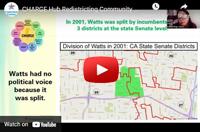
Beginning on Dec 6th,the Maryland State Legislature will convene a special session to redraw our state’s congressional boundaries. The special session is different from the January-to-April regular legislative session: the state legislature will not hear testimony on the budget, but will instead only take up legislation to redraw congressional districts based on the 2020 U.S. Census data, consider overriding more than 20 bills vetoed by the Governor last Spring, and elect a new State Treasurer.
Your Voice in the Redistricting Process
Beginning with the special legislative session in December, and continuing through the regular legislative session in January 2022, the Maryland Senate, House of Delegates, and Governor will collaborate on how state legislative districts will be drawn. To get input from citizens on how these boundaries should be decided, the state has formed redistricting commissions that will meet periodically to hear from residents. AFT-Maryland members should have their voices heard by participating in these meetings.
- The Legislative Commission on Redistricting had its first meeting on August 31, 2021 to talk through the process. Click here to watch the recording of that meeting. Upcoming meetings can be found on the MGALEG website, along with how you can sign up to let the commission know your priorities: mgaleg.maryland.gov
- The Governor also has a redistricting committee. They will meet regularly throughout the rest of the summer and into the fall. You can also find more information on Governor Hogan’s Maryland Citizens Redistricting Commission website, including a meeting schedule and instructions on how to participate at https://redistricting.maryland.gov/
- Our friends at Common Cause Maryland have put together an online calendar for all the redistricting meetings, both statewide and at the city/county level. Find the calendar on their site at commoncause.org/maryland
How do commissioners, elected officials, and experts make decisions on how the districts are redrawn?
In theory, the redrawing of district lines is meant to keep “communities of shared interest” intact, to help ensure the communities have a voice in government. However, in practice, districts have historically been redrawn to dilute the voices of certain communities, particularly minority communities.

Educate Yourself! This video, put together by our friends at CHARGE hub (NAACP, Common Cause, League of Women Voters) talks about how districts have been drawn historically, and what you can do to help ensure districts in Maryland are drawn fairly.
https://www.redistrictingcommunitycollege.com/redistricting-community-college
You draw the maps! Here are two fun games you can utilize for free, to think about how YOU would redraw Maryland’s new districts.
 |
https://districtr.org/ |
 |
https://davesredistricting.org |
Click here for YouTube tutorials on how to use the Dave’s Redistricting tool.
